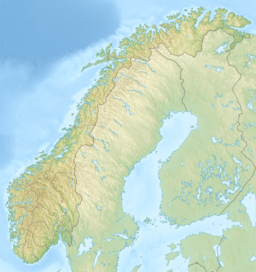
Telemark is a county and a current electoral district in Norway. Telemark borders the counties of Vestfold, Buskerud, Vestland, Rogaland and Agder. In 2020, Telemark merged with the county of Vestfold to form the county of Vestfold og Telemark. On 1 January 2024, the county of Telemark was re-established after Vestfold og Telemark was divided again.

Drangedal is a municipality in Telemark county, Norway. It is located in the traditional district of Grenland. The administrative centre of the municipality is the village of Prestestranda. Other villages in Drangedal include Bø i Tørdal, Bostrak, Gautefall, Henseid, and Neslandsvatn.
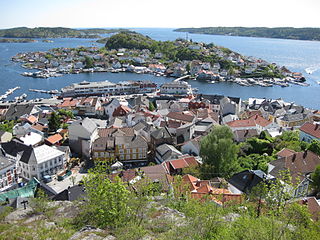
Kragerø is a municipality in Telemark county, Norway. It is located in the traditional districts of Grenland and the smaller Vestmar. The administrative centre of the municipality is the town of Kragerø. Villages in Kragerø include Helle, Vadfoss, Kil, and Portør.

Bamble is a municipality in Telemark county, Norway. It is located in the traditional district of Grenland. The administrative centre of the municipality is the town of Langesund. Other population centres in Bamble include the town of Stathelle and the villages of Bamble, Botten, Herre, and Valle.
Grenland is a traditional district in Telemark county, in the south-east of Norway. "Grenland" has referred to varying locations throughout history. In modern times, Grenland refers to the areas of the municipalities of Skien, Porsgrunn, Bamble, and Siljan. Sometimes the municipalities Kragerø and Drangedal are also considered to be part of the area. The region encompasses 1,794 square kilometres (693 sq mi) and has 122,978 inhabitants (2004), which translates as 12% of the area and 64% of the population of Telemark.

The Sørlandet Line is a railway line between Drammen via Kristiansand to Stavanger. The line is 545 kilometers (339 mi) long between Oslo and Stavanger.
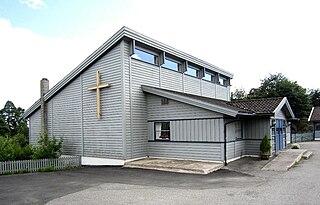
Helle is a village in Kragerø Municipality in Telemark county, Norway. The village is located on the north shores of Hellefjorden about 7 km (4.3 mi) northeast of the town of Kragerø. The village of Vadfoss is located immediately west of Helle. The village of Helle includes the neighborhoods of Nordbø, Sollia, Måneliheia, and Skarbo. There are several small lakes in the hills above Helle, including Upper and Lower Strandtjenn, Langtjenn, Bastautjenn, Årømyrtjenna, and Svarttjenn.
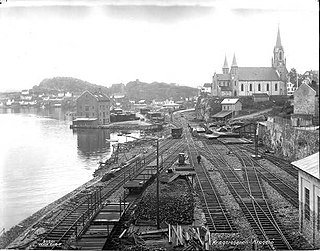
The Kragerø Line was a 27-kilometer (17 mi) long railway line between Neslandsvatn and Kragerø in Telemark county, Norway. It was opened on 2 December 1927 as part of the Sørlandet Line. From 10 November 1935, the Sørlandet Line was extended from Neslandsvatn to Arendal, and the Kragerø Line became a branch. It was mostly served with feeder trains, although a through train to Oslo was kept until the 1970s. Falling ridership caused the line to become closed from 1 December 1989, along with many other branch lines. Part of the line remains, although other parts have been demolished.

Neslandsvatn is a village in Drangedal Municipality in Telemark county, Norway. The village is located along the small lake Neslandsvatnet, about 16 kilometres (9.9 mi) to the southeast of the village of Prestestranda. The village of Henseid is located about 12 kilometres (7.5 mi) to the northeast, across the large lake Toke. Kroken Church is located about 3 kilometres (1.9 mi) to the southwest of the village.
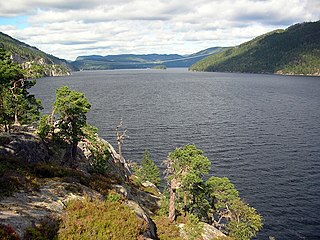
Tinnsjå is one of the largest lakes in Norway measuring about 51.38 km2 (19.84 sq mi). It is also one of the deepest lakes in Europe, reaching a depth of 460 m (1,510 ft). Tinnsjå is located in the municipalities of Tinn and Notodden in Telemark county. At its source in the west, the Måna river flows out of the lake Møsvatn and past the town of Rjukan into Tinnsjå. From the north, the river Mår flows from the lakes Mår, Gøystavatn, and Kalhovdfjorden into Tinnsjå. Tinnsjå is part of the Skien watershed, and it drains via the Tinnelva river in the south, down to the lake Heddalsvatn.
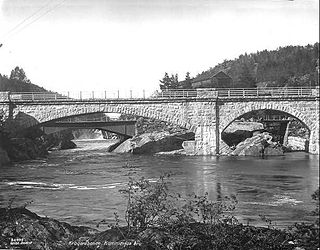
Vadfoss is a village in Kragerø Municipality in Telemark county, Norway. The village is located along the river Kammerfosselva, about midway betweenthe villages of Helle to the east and Kil to the west. It is also close to the town of Kragerø, which is located roughly 5 kilometres (3.1 mi) to the southeast.

Prestestranda is the administrative centre of Drangedal Municipality in Telemark county, Norway. The village is located at the northwestern end of the lake Øvre Toke, about 12 kilometres (7.5 mi) to the southeast of the village of Bostrak and about 12 kilometres (7.5 mi) to the northwest of the village of Henseid. Drangedal Church is located in the village.

Treungen or Tveitsund is the administrative centre of Nissedal Municipality in Telemark county in Norway. Treungen and Tveitsund were previously separate villages, but they have grown together and now form one large urban area. The 1.01-square-kilometre (250-acre) village has a population (2022) of 540 and a population density of 534 inhabitants per square kilometre (1,380/sq mi). The village is the sole population centre that has more than 200 residents in all of Nissedal municipality.
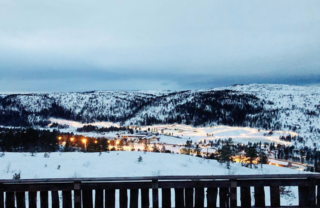
Gautefall is a mountain village in Drangedal Municipality in Telemark county, Norway. The village is located in the mountains about 12 kilometres (7.5 mi) southwest of the village of Bustrak and about 15 kilometres (9.3 mi) northeast of the village of Treungen. Gautefall is home to a ski center and tourist resort. The village area consists mostly of vacation homes and cabins. It is located in a mountainous area and is a major winter sports destination. It is a popular destination for skiing, hiking, fishing, hunting, swimming, and other recreational activities.
Henseid or Henneseid is a village in Drangedal Municipality in Telemark county, Norway. The village is located on the north shore of the lake Toke, about 12 kilometres (7.5 mi) to the southeast of the village of Prestestranda.

Flåvatn is a lake in the municipalities of Nome and Kviteseid in Telemark county, Norway. The lake is the easternmost of the three connected lakes Bandak, Kviteseidvatnet and Flåvatn, which are all part of the Telemark Canal. The lake's area is 19.52 square kilometres (7.54 sq mi). The outlet is via the river Straumen (Eidselva) which flows down to the lake Norsjø.

St. Olav's Church or Skeidi Church is a partly restored ruins of a parish church of the Church of Norway in Bamble Municipality in Telemark county, Norway. It is located in the village of Bamble. It was the church for the Skeidi parish which was part of the Bamble prosti (deanery) in the Diocese of Agder og Telemark. The stone church was built in a long church design around the year 1150 using plans drawn up by an unknown architect.

The Grenland Line is a proposed high-speed railway line that would connect Grenland and Gjerstad in Norway. Specifically, the line would connect the Sørlandet Line at Skorstøl to the Vestfold Line at either Porsgrunn or Skien, allowing passenger trains from Stavanger and Kristiansand to be routed on the Vestfold Line through Grenland and Vestfold. The Grenland Line is proposed built with double track and with a speed of 250 km/h (160 mph). Three routes have been proposed, varying in length between 64 and 70 kilometers. A prerequisite is that the Vestfold Line be upgraded to double track and high-speed, a process that started in the mid-1990s and which is scheduled for completion in 2032. A completion of the upgraded Vestfold Line and the Grenland Line would reduce travel time for passenger trains between Gjerstad and Oslo by about 70 minutes.
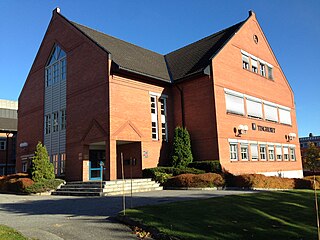
Telemark District Court is a district court located in Telemark county, Norway. This court is based at three different courthouses which are located in Skien, Notodden, and Kviteseid. The court serves the 17 municipalities in Telemark. The court in Skien accepts cases from the municipalities of Bamble, Drangedal, Kragerø, Nome, Porsgrunn, Siljan, and Skien. The court in Kviteseid accepts cases from the municipalities of Fyresdal, Kviteseid, Nissedal, Tokke, Seljord, and Vinje. The court in Notodden accepts cases from the municipalities of Hjartdal, Notodden, Tinn, and Midt-Telemark. The court is subordinate to the Agder Court of Appeal.



